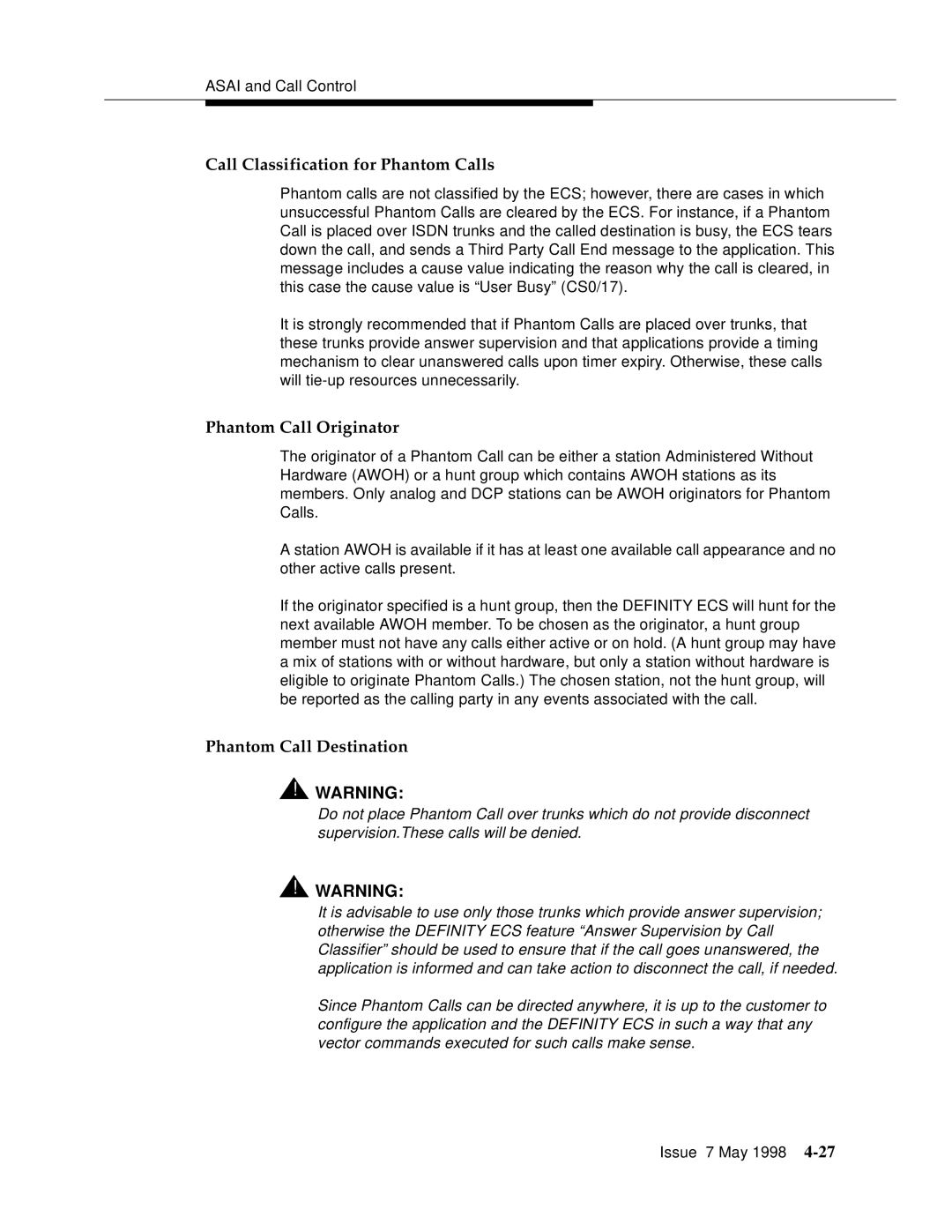
ASAI and Call Control
Call Classification for Phantom Calls
Phantom calls are not classified by the ECS; however, there are cases in which unsuccessful Phantom Calls are cleared by the ECS. For instance, if a Phantom Call is placed over ISDN trunks and the called destination is busy, the ECS tears down the call, and sends a Third Party Call End message to the application. This message includes a cause value indicating the reason why the call is cleared, in this case the cause value is “User Busy” (CS0/17).
It is strongly recommended that if Phantom Calls are placed over trunks, that these trunks provide answer supervision and that applications provide a timing mechanism to clear unanswered calls upon timer expiry. Otherwise, these calls will
Phantom Call Originator
The originator of a Phantom Call can be either a station Administered Without Hardware (AWOH) or a hunt group which contains AWOH stations as its members. Only analog and DCP stations can be AWOH originators for Phantom Calls.
A station AWOH is available if it has at least one available call appearance and no other active calls present.
If the originator specified is a hunt group, then the DEFINITY ECS will hunt for the next available AWOH member. To be chosen as the originator, a hunt group member must not have any calls either active or on hold. (A hunt group may have a mix of stations with or without hardware, but only a station without hardware is eligible to originate Phantom Calls.) The chosen station, not the hunt group, will be reported as the calling party in any events associated with the call.
Phantom Call Destination
![]() ! WARNING:
! WARNING:
Do not place Phantom Call over trunks which do not provide disconnect supervision.These calls will be denied.
![]() ! WARNING:
! WARNING:
It is advisable to use only those trunks which provide answer supervision; otherwise the DEFINITY ECS feature “Answer Supervision by Call Classifier” should be used to ensure that if the call goes unanswered, the application is informed and can take action to disconnect the call, if needed.
Since Phantom Calls can be directed anywhere, it is up to the customer to configure the application and the DEFINITY ECS in such a way that any vector commands executed for such calls make sense.
